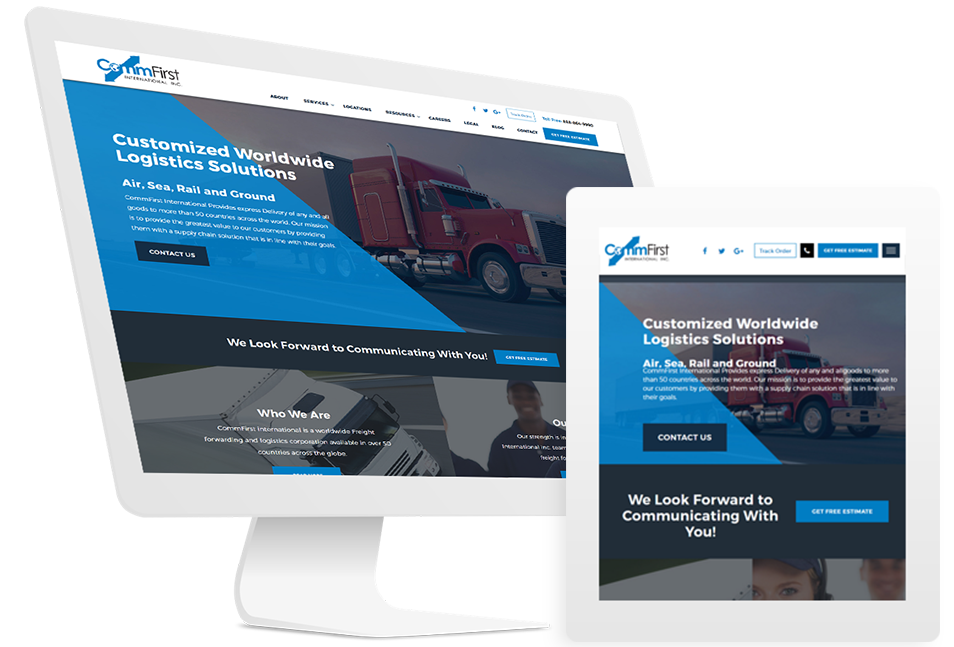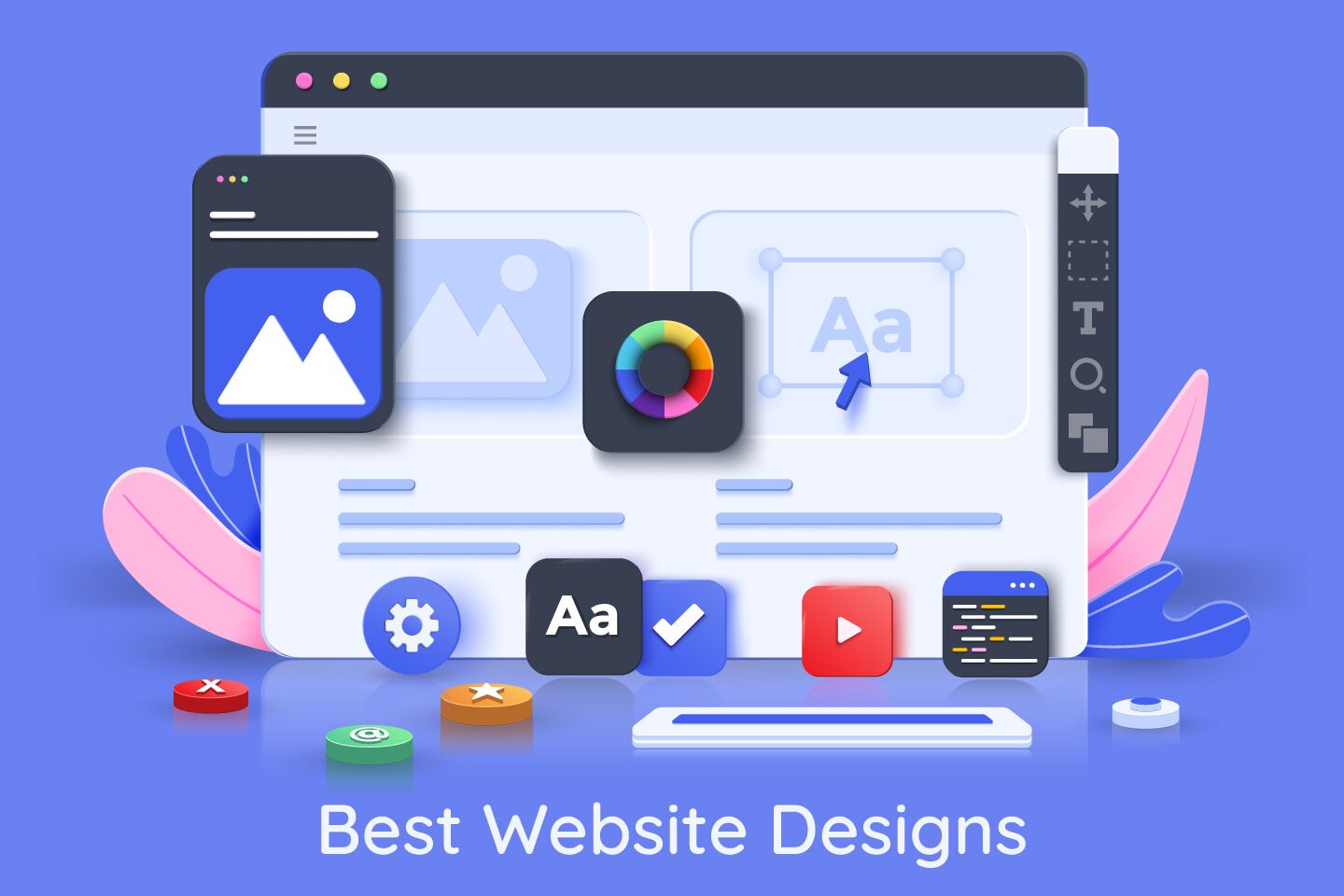Top Tips for Creating an Impactful Internet Site Layout That Converts
To attain this, one need to consider a range of aspects, including comprehending the target audience, prioritizing customer experience, and enhancing for mobile systems. The strategic usage of compelling call-to-actions and a well-defined visual hierarchy plays an important duty in guiding customers with their journey.

Understand Your Target Target Market
Understanding your target market is basic to effective internet site style, as it prepares for developing an appealing user experience. Identifying who your users are, including their demographics, choices, and behaviors, makes it possible for developers to customize the site's content, layout, and capability to satisfy certain demands.
Carrying out detailed marketing research is crucial in this process. Surveys, meetings, and analytics can supply important insights right into customer expectations and pain points. By assembling this data, designers can create individual personalities that represent different segments of the audience, ensuring that design choices are notified and pertinent.
Furthermore, comprehending the target market helps in choosing appropriate style elements such as color pattern, typography, and images that resonate with users. An internet site that talks directly to its target market fosters a sense of link and depend on, encouraging longer visits and greater conversion rates.
Inevitably, a user-centered technique to site style not just enhances user contentment yet additionally sustains service goals by driving engagement and commitment. By prioritizing the requirements and preferences of the target audience, a site can effectively serve its purpose and attain wanted results.
Prioritize Individual Experience
To improve the overall efficiency of a site, prioritizing individual experience (UX) is essential (Website Design). A properly designed UX makes certain that visitors can navigate the website effortlessly, find details swiftly, and involve with content meaningfully. This leads to boosted user contentment and greater conversion prices
Begin by applying intuitive navigating. Menus must be practically structured, permitting customers to locate vital areas of the site with minimal initiative. Uniformity in layout components, such as color pattern and typefaces, fosters familiarity, which is crucial for maintaining customer involvement.
Furthermore, think about the loading speed of your site. A delay of just a couple of secs can result in substantial drop-offs, as individuals are much less most likely to await a slow-loading web page. Simplifying photos and enhancing code can enhance performance and keep site visitors.
Additionally, clarity in content presentation is crucial. Usage succinct, interesting language and separate message with visuals to boost readability. By focusing on customer experience, you not only produce a much more pleasurable environment for site visitors however also strengthen your brand name's reputation. Inevitably, a focus on UX is an investment in the lasting success of your web site.
Optimize for Mobile Gadgets
Optimizing for smart phones is important in today's electronic landscape, where an increasing variety of customers access web sites with smartphones and tablets. A mobile-friendly design not only improves customer experience yet likewise plays a considerable function in improving online search engine positions. To accomplish this, it is vital to embrace a responsive design that immediately adapts to various screen sizes and positionings.

Loading rate is an additional important element; mobile users are usually much less individual and anticipate rapid accessibility to info. Enhance pictures and utilize browser caching to enhance performance. Test your site on multiple gadgets and display resolutions to recognize and fix any potential use issues. By prioritizing mobile optimization, you ensure that your site remains competitive and effectively involves a more comprehensive target market.
Usage Engaging Call-to-Actions
A website's effectiveness often rests on its ability to assist visitors toward desired actions, making compelling call-to-actions (CTAs) essential components of layout. CTAs offer as the pivotal points that route customers to engage with the website, whether that means making an acquisition, signing up for an e-newsletter, or downloading and install a source.
To create reliable CTAs, quality is paramount. Use succinct language that clearly interacts the action you desire the customer to take. Phrases such as "Begin," "Register Free," or "Shop Now" not just communicate seriousness yet additionally eliminate ambiguity. The placement of CTAs is equally important; they should be tactically placed throughout the website to ensure they are conveniently noticeable, especially in high-traffic locations.
Moreover, the layout of CTAs must stand apart without being meddlesome. Utilize contrasting shades and clear fonts to guarantee they catch attention. In addition, consider making use of directional hints, such as arrows or images, to lead users towards these switches. By concentrating on these aspects, businesses can considerably boost individual engagement, driving conversions and inevitably attaining their website's goals.
Focus on Visual Power Structure
Efficient site design depends greatly on a well-structured visual hierarchy that guides individuals through material perfectly. By organizing components in a fashion that prioritizes information, developers can enhance individual experience and facilitate decision-making. This involves utilizing size, color, contrast, and spacing strategically to attract attention to the most essential parts of a webpage.
The use of bigger font styles for headings and subheadings establishes a clear distinction between various sections, permitting users to scan material easily. Additionally, employing contrasting colors for switches and calls-to-action can record user attention and motivate interaction. Whitespace is one more necessary element; it stops mess and allows customers to concentrate on vital messages without disturbances.
Pictures and graphics must complement the text while also adhering to the recognized power structure, reinforcing the total message (Website Design). Consistency in style elements, such as color plans and typography, additional enhances the visual pecking order, making navigation intuitive

Verdict
In final thought, efficient internet site layout necessitates a detailed understanding of the target audience, prioritization of individual experience, and mobile optimization. Ultimately, a well-executed web site design offers as a crucial element in driving individual activities and accomplishing business purposes.
Comments on “Cutting-Edge Website Design Services with a Focus on UX”